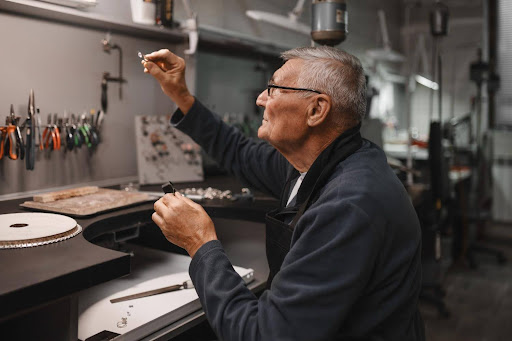What began as small-scale experimentation in garages and maker spaces has evolved into a full-fledged ecosystem supporting innovators, small businesses, educators, and even established manufacturers. And while hardware receives much of the attention, the real backbone of this democratization is something far more fundamental: the materials themselves. As more creators turn to reliable, high-performance options like PLA Pro, the industry is entering a phase where quality materials determine not just what can be made, but who gets to make it.
Today, additive manufacturing offers something traditional production rarely could: accessibility. With a desktop 3D printer and the right filament, individuals can prototype ideas, start micro-businesses, produce custom tools, or build components with fit-for-purpose precision. This shift represents more than a technological evolution. It signals a cultural one, where creativity, problem-solving, and entrepreneurship become available to far more people.
From Innovation Gatekeeping to Open Possibility
For most of the 20th century, physical production relied on costly machinery, large manufacturing facilities, and specialized labor. Even the simplest prototype often required outsourcing and significant investment. That barrier kept innovation centralized in corporations, universities, or heavily funded startups.
Additive manufacturing disrupted that system. By using layered material deposition instead of molds or machining, people could bring ideas to life on their own terms. Yet the real turning point wasn’t just the printers, it was the development of high-quality materials that performed consistently and safely.
This is why reliable filaments such as PLA Pro matter. They allow creators to trust their results, iterate quickly, and scale their ideas without worrying about unpredictable material behavior. Consistent quality translates directly into creative freedom.
Quality Materials Are the New Infrastructure
The promise of additive manufacturing lies in turning concepts into reality quickly and affordably. But achieving this depends heavily on the reliability of the filament. Low-grade materials introduce problems, warping, brittleness, inconsistent extrusion, or structural failure, that discourage new creators or prevent small businesses from scaling their output.
High-quality materials change the equation entirely.
When a filament like PLA Pro delivers strong layer adhesion, dimensional accuracy, and dependable performance across different machines, it becomes a form of technological infrastructure. It ensures that the printer isn’t a toy, it’s a tool. For educators, this means smoother classroom experiences. For entrepreneurs, it means fewer failed prints. For manufacturers, it means more precise prototypes.
Research from Additive Manufacturing Journal emphasizes that material reliability has become one of the strongest predictors of long-term adoption, especially among industries integrating 3D printing into daily processes. Better materials lead to better outcomes, and reduce the learning curve for new users.
Expanding Who Gets to Innovate
The democratization of production isn’t just about convenience. It’s about widening participation. Today, artists, engineers, hobbyists, students, and even retirees can create tangible products from their homes. Schools use 3D printing to spark early interest in STEM. Small businesses launch entire product lines through desktop fabrication.
The accessibility of high-quality materials plays a core role in enabling that diversity. When someone new to 3D printing loads a spool of PLA Pro and gets a clean, successful print on the first try, it reinforces confidence. It accelerates learning. It lowers the psychological barrier of “I’m not technical enough.”
Reliable materials level the playing field. Suddenly, people who once saw manufacturing as unreachable can build functional parts, art pieces, assistive devices, or custom tools without industrial infrastructure.
Supporting Micro-Manufacturing and Small Business Growth
One of the most exciting developments in additive manufacturing is the rise of micro-production: small-batch, custom, or on-demand runs created by individuals or tiny teams. These makers depend on filaments that provide consistent mechanical properties and visual quality.
Filaments like PLA Pro allow small businesses to produce products customers trust, whether they’re selling through online marketplaces, local craft fairs, or direct-to-consumer channels. Stronger, smoother, more predictable material performance leads to fewer returns, better reviews, and larger customer bases.
Additive manufacturing supports a new generation of entrepreneurs, people who may not have the resources to outsource production, but who can run a thriving operation with a few desktop printers and reliable filament.
Sustainability Through Precision and Reduced Waste
Image from Freepik
Additive manufacturing also intersects with sustainability in meaningful ways. Traditional subtractive manufacturing removes material from a solid block, often producing significant waste. Additive processes, by contrast, use exactly the amount of material required.
But sustainability doesn’t end with the manufacturing method itself. Material choice plays an equally important role. PLA, including enhanced options like PLA Pro, is a biodegradable, plant-derived polymer that reduces dependency on petroleum-based plastics. Its eco-friendly nature aligns strongly with modern consumer and industry priorities.
When high-quality PLA is used, the reduced failure rates also lessen waste. Every successful print means fewer discarded parts, fewer wasted hours, and fewer spools consumed prematurely.
A New Kind of Production Culture
What’s emerging today is not merely a technological shift, it’s a cultural one. Additive manufacturing encourages experimentation. It rewards curiosity. It allows people to solve personal problems creatively, whether that means designing adaptive devices, custom home solutions, or artistic expressions.
This culture thrives when the materials backing it are reliable. Makers trust their tools more. Educators bring the technology into classrooms with greater confidence. Innovators iterate faster. And the community around 3D printing grows stronger, more collaborative, and more diverse.
The Future of Production Is Personal
As additive manufacturing continues to evolve, the role of high-quality materials will only grow more central. Hardware will improve, but it’s the filaments that will determine what’s possible. They serve as the foundation for every idea turned physical.
In this evolving landscape, materials like PLA Pro help ensure that access remains open, that production doesn’t retreat into the hands of a few, but stays distributed, creative, and democratic.
Additive manufacturing is no longer the future of production.
It’s the present.
And it’s reshaping who gets to create, build, and innovate, one spool of filament at a time.






